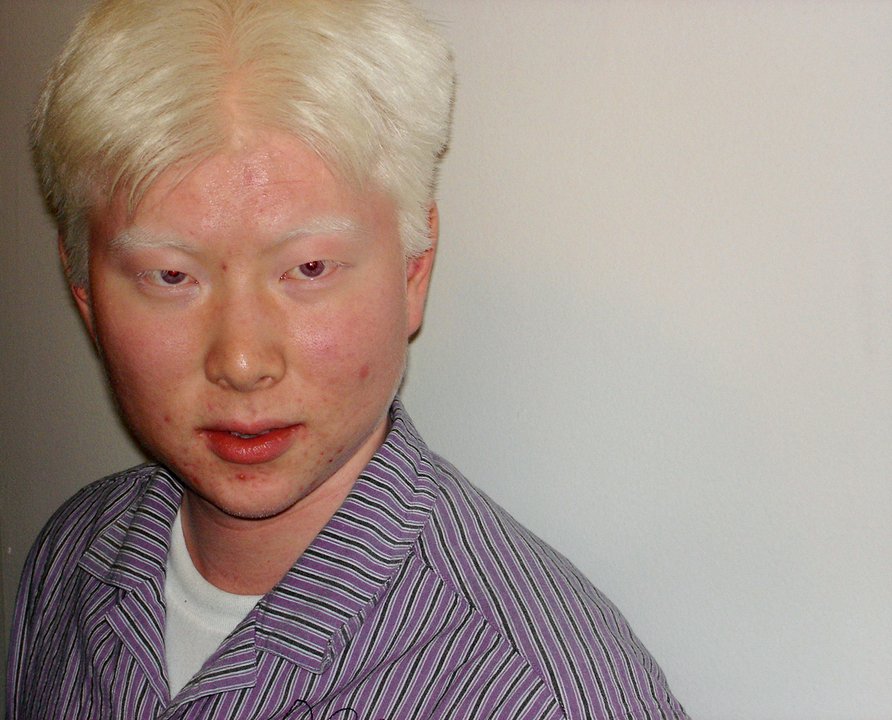Albino Asians represent a captivating and often misunderstood segment of the Asian population, characterized by their distinct lack of pigmentation. This unique genetic condition, known as albinism, results in lighter skin, hair, and eye color. However, the experience of being an albino individual in Asia often comes with its own set of challenges and societal perceptions. Understanding the nuances surrounding albino Asians is crucial for fostering inclusivity and celebrating diversity in all its forms.
In many Asian cultures, beauty ideals are often tied to darker skin tones, leading to stigmas surrounding lighter-skinned individuals, including those with albinism. As a result, albino Asians may face discrimination and challenges related to their identity. Despite these societal hurdles, many individuals embrace their uniqueness and work towards changing perceptions, advocating for acceptance and inclusivity within their communities. By shedding light on the experiences of albino Asians, we can foster a greater understanding and appreciation for the diversity that exists within the Asian continent.
Moreover, the stories of albino Asians are not just about their physical appearance but also about their extraordinary resilience and contributions to society. Many have defied stereotypes and achieved success in various fields, from fashion and entertainment to activism and advocacy. As we delve deeper into the lives of albino Asians, we can learn not only about their struggles but also about their triumphs and the beauty of their individuality. This article aims to explore the multifaceted world of albino Asians, highlighting their experiences, challenges, and the ongoing journey towards acceptance and recognition.
What is Albinism and Its Impact on Asians?
Albinism is a genetic condition that results in the absence of melanin, the pigment responsible for the color of skin, hair, and eyes. This condition affects individuals across various ethnic backgrounds, including those in Asia. The impact of albinism on Asians can be profound, influencing not only their physical appearance but also their social interactions and mental health.
How Common is Albinism in Asia?
The prevalence of albinism varies significantly across different regions of Asia. In some countries, the number of individuals with albinism is relatively low, while in others, it may be more common. Factors such as genetics, environment, and cultural perceptions contribute to these differences. For instance, in certain rural areas, albinism may be viewed with curiosity or superstition, affecting how albino individuals are treated.
Are Albino Asians Subject to Stigmas and Discrimination?
Yes, unfortunately, many albino Asians face stigmas and discrimination due to their appearance. In cultures where darker skin is often preferred, albino individuals may be marginalized or ridiculed. This discrimination can lead to severe psychological impacts, including low self-esteem and social isolation. However, awareness and advocacy are growing, helping to combat these negative perceptions and promote acceptance.
Notable Albino Asians: Who Are They?
Among the notable albino Asians is a rising star in the modeling world, who has used their platform to advocate for individuals with albinism. Their story highlights the beauty of diversity and the importance of representation in media and fashion. Let's explore their biography and contributions further.
| Name | Birthdate | Nationality | Profession |
|---|---|---|---|
| Yuki Takahashi | March 12, 1995 | Japanese | Model and Activist |
What Contributions Have Albino Asians Made to Society?
Albino Asians like Yuki Takahashi have made significant contributions to society by advocating for awareness about albinism and challenging beauty standards. Through their work, they have opened dialogues about acceptance and have inspired many to embrace their uniqueness. Their participation in various campaigns and initiatives has helped shine a light on the challenges faced by individuals with albinism, promoting a message of inclusivity.
How Can We Support Albino Asians?
Supporting albino Asians involves recognizing their experiences and advocating for their rights. Here are a few ways to contribute positively:
- Educate yourself and others about albinism and its impact on individuals.
- Support organizations that advocate for the rights of people with albinism.
- Promote positive representations of albino individuals in media and fashion.
- Encourage inclusivity in communities and workplaces.
What Is the Future for Albino Asians?
The future for albino Asians looks promising as awareness and acceptance grow. With the help of advocates and allies, societal perceptions are beginning to shift, allowing for a more inclusive environment. As more individuals with albinism share their stories and successes, they pave the way for future generations to embrace their identities proudly.
Can Media Representation Change Perceptions of Albino Asians?
Yes, media representation plays a crucial role in changing perceptions of albino Asians. By showcasing diverse narratives and highlighting the achievements of individuals with albinism, media can help to dismantle stereotypes and foster a culture of acceptance. Positive portrayals can empower albino individuals and inspire others to appreciate the beauty of diversity.
What Can We Learn from the Experiences of Albino Asians?
The experiences of albino Asians teach us valuable lessons about resilience, acceptance, and the importance of embracing diversity. As they navigate a world that often misunderstands them, they remind us that beauty comes in all forms and that every individual has the right to be celebrated for who they are. By listening to their stories and advocating for their rights, we can contribute to a more inclusive and compassionate society.




